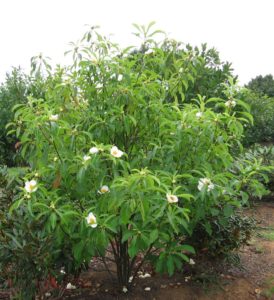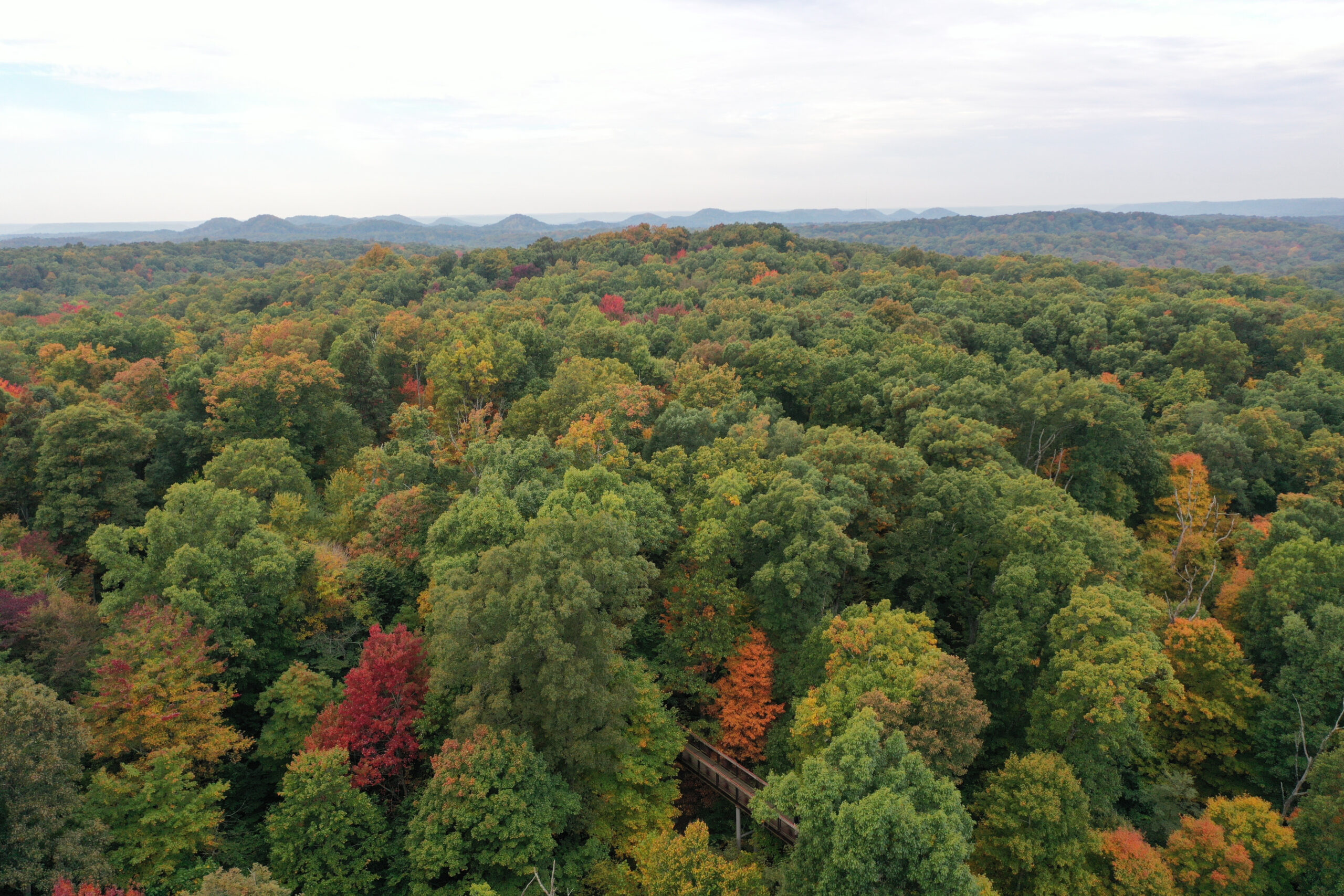
Like a true southern belle, the Franklin Tree (Franklinia alatamaha) is rooted in Dixieland and its name boasts impressive lineage. With camellia-like, sweetly fragrant, snow white flowers, it is unusually beautiful and a rare find. So rare, in fact, Franklin trees are extinct in the wild and have not been seen in their natural habitat since 1803.
The Franklin tree was discovered growing along the banks of Georgia’s Altamaha River in 1765 by John Bartram, a celebrated American botanist, and his son William. They named the tree in honor of their friend, Benjamin Franklin, and the river beside which it was found. Luckily, the Bartrams took plants and seeds home to Philadelphia, where they propagated the tree. All Franklin trees today are descendants of the Bartrams’ specimens, including those planted at Bernheim.
Theories regarding the causes of the tree’s disappearance include habitat destruction, over-collection by nurserymen, or the possibility that it was not genetically diverse enough to withstand pathogens or changing conditions. Efforts are being made to restore the Franklin tree by planting specimens near the site where they were originally found. In the meantime, it remains a popular garden plant that lives in on through cultivation.
Photo Credit: Natural Landscapes Nursery
Want more Vanishing Acts? Click here to view the archive.
Vanishing Acts: Trees Under Threat was developed and produced by The Morton Arboretum in association with the Global Trees Campaign, a partnership between Fauna and Flora International and Botanic Gardens Conservation International.
Funding for this exhibit comes from The Morton Arboretum and the U.S. Institute for Museum and Library Services, Museums for America Grant Program.
Support locally comes from LG&E and KU. Additional support provided by Shepherdsville/Bullitt County Tourism.

